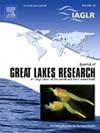Regional variability of resource use, trophic position and habitat coupling within Lake Superior
IF 2.5
3区 环境科学与生态学
Q3 ENVIRONMENTAL SCIENCES
引用次数: 0
Abstract
Food web characterizations of large lakes have rarely considered spatial variation in resource use or trophic connections among species. This is also true of Lake Superior, the world’s second largest freshwater lake. While instances of habitat coupling in Lake Superior have been documented, the extent to which coupling or resource specialization in this system varies spatially, particularly within a species, remains unknown. To address this, stable isotopes of common fish species and prey were collected and analyzed along a depth gradient at four geographically and bathymetrically distinct regions of Lake Superior; 1099 fish and 60 composite invertebrate samples (separately for zooplankton and benthos) were collected from both deeper regions (Keweenaw and Western Arm) and shallower regions (Nipigon Bay and Whitefish Bay). Benthic and pelagic species of fish and invertebrates were collected to characterize different energy pathways. Within regions and taxa, benthic reliance and trophic position differences across depth strata were large and comparable to those previously observed among species lake wide. Across regions, large within-taxa differences in resource use patterns and trophic position existed at similar depth strata, as well as among taxa. Generally, there was a high reliance on pelagic resources across all fish species with greater benthic resource use observed at medium and deep strata. As expected, higher trophic organisms tended to have greater evidence of benthic-pelagic coupling. Our findings reinforce the need to consider regional variation in resource use and trophic position in large lake systems over broad approaches that can overgeneralize patterns of energy flow.
苏必利尔湖资源利用、营养地位和生境耦合的区域变异
大型湖泊的食物网特征很少考虑资源利用的空间变化或物种间的营养联系。世界第二大淡水湖苏必利尔湖也是如此。虽然苏必利尔湖的生境耦合实例已被记录在案,但该系统中耦合或资源专门化的空间变化程度,特别是在一个物种内,仍然未知。为了解决这个问题,我们收集了苏必利尔湖四个地理和水深不同区域的常见鱼类和猎物的稳定同位素,并沿着深度梯度进行了分析;从较深地区(Keweenaw和Western Arm)和较浅地区(Nipigon湾和白鱼湾)收集了1099条鱼和60条复合无脊椎动物样本(分别为浮游动物和底栖动物)。收集了底栖和远洋鱼类和无脊椎动物物种,以表征不同的能量途径。在区域和分类群中,底栖生物依赖和营养位置在不同深度地层之间的差异很大,与以前在湖泊范围内观察到的物种差异相当。在相同深度的地层中,资源利用模式和营养地位在类群内以及不同类群间存在较大差异。一般来说,所有鱼类都高度依赖远洋资源,在中、深地层观察到的底栖生物资源使用较多。正如预期的那样,高营养生物倾向于有更多的底底-上层耦合的证据。我们的研究结果强调了考虑大型湖泊系统中资源利用和营养地位的区域差异的必要性,而不是过分概括能量流动模式的广泛方法。
本文章由计算机程序翻译,如有差异,请以英文原文为准。
求助全文
约1分钟内获得全文
求助全文
来源期刊

Journal of Great Lakes Research
生物-海洋与淡水生物学
CiteScore
5.10
自引率
13.60%
发文量
178
审稿时长
6 months
期刊介绍:
Published six times per year, the Journal of Great Lakes Research is multidisciplinary in its coverage, publishing manuscripts on a wide range of theoretical and applied topics in the natural science fields of biology, chemistry, physics, geology, as well as social sciences of the large lakes of the world and their watersheds. Large lakes generally are considered as those lakes which have a mean surface area of >500 km2 (see Herdendorf, C.E. 1982. Large lakes of the world. J. Great Lakes Res. 8:379-412, for examples), although smaller lakes may be considered, especially if they are very deep. We also welcome contributions on saline lakes and research on estuarine waters where the results have application to large lakes.
 求助内容:
求助内容: 应助结果提醒方式:
应助结果提醒方式:


